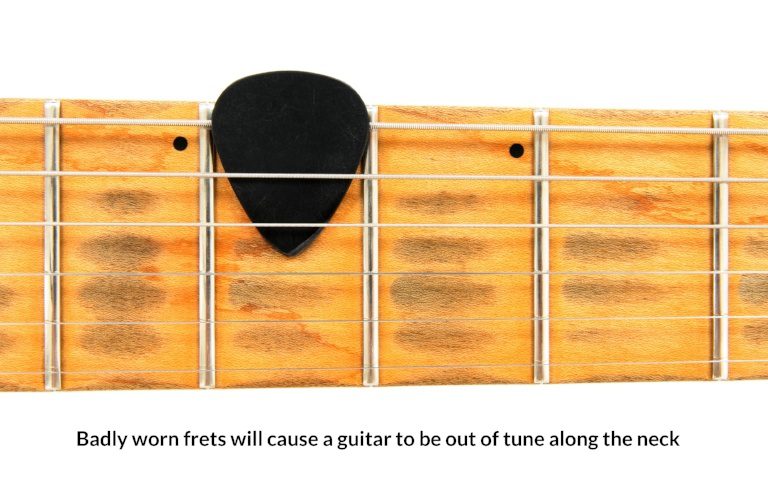
It Starts with the Source
Capturing a great acoustic guitar recording all starts with the source. Even the greatest mic and signal chain will not fix a bad-sounding instrument. Several guitar parts contribute to the overall sound, the first being the nut (the small piece below the headstock where each string passes through before it travels down the fretboard.) If the nut is improperly cut or worn, some strings may buzz or sound duller than others. Next, the frets need to be as flat as possible and not show signs of wear, affecting the tuning of the strings along the neck.
The tailpiece of the guitar can also affect the intonation of the instrument. Some tailpieces are movable or have other adjustments that will result in better intonation along the entire length of the neck. Lastly, the neck itself needs to be straight and not warped. Once a guitar has been set up correctly, new strings go a long way to bring out the best tone of the instrument. A trusted guitar tech can make a good instrument sound great. Unless you have experience with the mechanics and repair of an acoustic guitar, it’s best to leave these adjustments in the hands of a professional.
The Gear
Microphones play a large part in the quality of a recording, and they don’t need to be expensive. For example, the Aston Spirit condenser, Shure SM7 dynamic, and SE Electronics Voodoo ribbon microphones are all under $500 and produce excellent professional results. The preamp is next in the chain, and there are many choices. Trusted names include Rupert Neve Designs, BAE, Radial Engineering, Fredenstein, Grace Designs, and Millennia Media. These companies and many more make affordable preamps in both standalone and the 500 series format.
You can also add EQ and Compression to your chain, but it’s not always necessary to use them during a recording. This approach allows you to spend more on the basic components of the chain, the mic, and the preamp. You can then add processing later during the mix with plug-ins in your DAW recorder.
Mic placement
Once your instrument and signal chain are in order, it’s important to place the microphones and players for the best results. For example, placing a microphone too close to the instrument would not only get in the player’s way, but may also produce a harsh sounding track. Pulling the microphone back from the source will give you a more balanced sonic picture of the instrument.
Click here to learn more about piano recording.

You can use one or two microphones to record an instrument. The blend between two mics placed as spaced pairs or an XY pattern can capture the instrument both below and above the soundhole. The two mics would then be recorded on separate tracks and blended later in the mix as a pair that could be panned broadly or more narrow.
Recording two guitars
When recording two players at once, the best approach is to have them face each other, and then use cardioid pattern microphones to reduce leakage between tracks. All the elements mentioned here contribute to the finished product. Paying attention to your source, signal chain, mic placement, and position of the players in the room will put you well on the way to an excellent recording.
